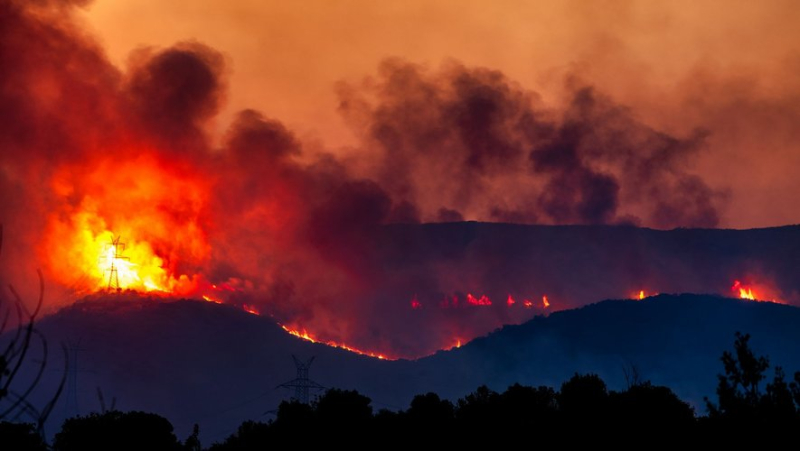Exposure to Wildfire Smoke: What It Is and What Are the Health Risks ?

Les feux de forêt affectent la santé des populations exposées aux fumées/
For several days, Greece has been ravaged by violent fires which now threaten its capital Athens. Although many localities had to be evacuated, threatened by the flames, a large part of the population is still exposed to the smoke from the forest fires. What do these fumes contain and what are the risks for the health of residents ?
This Tuesday, August 13, Greece is fighting for the third consecutive day against the numerous forest fires which broke out in the country, mainly in the Athens region. One of them spreads quickly, fueled by favorable weather conditions, including intense winds and high temperatures. One casualty was reported and several localities had to be evacuated.
In addition to the populations directly threatened by the flames, forest fires affect the health of populations exposed to the smoke, firefighters first and foremost. According to the specialist website Copernicus, “driven by strong winds, the fire produced a cloud of smoke extending over 300 km southwest towards Libya and covering the eastern part of Athens”.
On the 11th of August, a large wildfire burned out of control in Attica, Greece. The fire has affected at least 10,000 hectares and forced thousands of people to flee their homes.
Read more:https://t.co/VYw2OCmm0H#Φωτιά pic.twitter.com/fJ0oyrQl57
— Copernicus EU (@CopernicusEU) August 13, 2024
What is contained in the smoke from forest fires ?
According to the French National Agency for Food Safety (ANSES), suspended particles represent the impacted areas “the most significant air pollutant”. About 80% of these particles are fine particles, “the majority of which are submicron particles, the size of which is less than a micron”. Other suspended particles, the so-called giant ash.
There are also large quantities of carbon monoxide, a colorless, odorless, toxic and potentially fatal gas. This substance results from incomplete combustion and spreads rapidly in the environment, specifies the Ministry of Health. "Also found in the composition of smoke are many other chemicals including carbon dioxide (CO2), volatile organic compounds including acrolein, formaldehyde and benzene, semi-volatile compounds including polycyclic aromatic hydrocarbons (PAHs), heavy metals and nitrogen oxides (NOx)",continues Anses. These substances can settle on the ground and contaminate soils and waterways.
Respiratory and cardiovascular symptoms
Exposure to smoke causes mild and common symptoms such as headaches, mild cough, mucus secretion, irritation of the nose, throat, eyes and sinuses. More seriously, it can cause dizziness, wheezing, chest pain, severe coughing, asthma attacks, shortness of breath, heart palpitations (irregular heartbeat).
Firefighters are at the highest risk of being affected by the health effects of smoke exposure. “In addition, populations with chronic respiratory diseases, including asthmatics, are particularly sensitive to smoke from forest fires, as are people with cardiovascular diseases,” specifies ANSES. Infants and children, the elderly, pregnant women, people who work outdoors and people who engage in physical activity outdoors are also more vulnerable.
How to protect yourself from smoke ?
For these people, in the event of direct exposure to smoke, it is recommended to wear a filtering mask (type FFP2). And to consult a doctor or go to the emergency room if symptoms occur. For everyone, in areas that have not been evacuated but are exposed to smoke, Anses recommends:
Limit travel and time spent outdoors; Keep doors and windows closed and only ventilate when conditions permit; Cover vents with damp cloths; Turn off controlled mechanical ventilation (CMV) during smoke episodes; Avoid outdoor physical activities in the area; Ensure the quality of the air inside your home by avoiding incense, candles, etc.; Closely monitor sensitive individuals.




